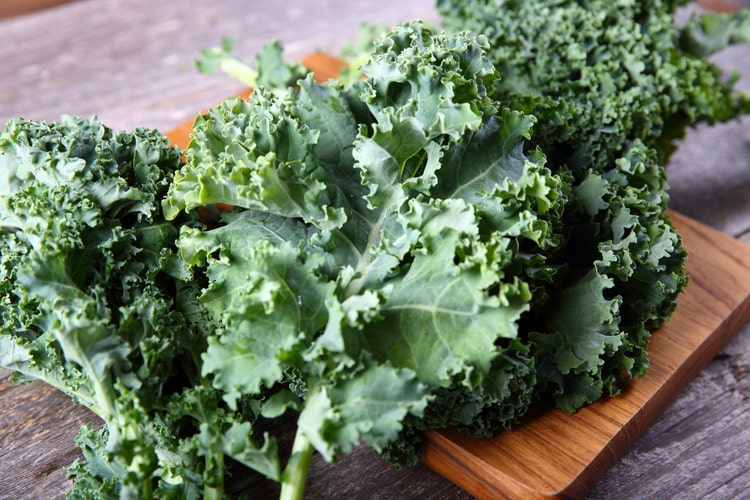News Flash: Dirty Kale, A Pain-Free Existence And Toxic Positivity

Every week, we’re bringing you a roundup of the latest health and wellness news to hit the wire.This week, we look at how kale has vaulted its way into the “Dirty Dozen,” why a Scottish woman’s gene mutation could lead to new treatments for pain, and the right way to help a friend through bad times.
Kale? Nooo!
Say it isn’t so. Kale, the star of your green smoothies and healthy chips, now ranks as the third most pesticide-contaminated fruit or vegetable, behind strawberries and spinach, according to the Environmental Working Group’s annual “Dirty Dozen” report, which is based on U.S. Dept. of Agriculture (USDA) testing.
Over 92 percent of kale samples were found to have residue from two or more pesticides, and a single piece of kale could have up to 18 pesticides on it, according to this MarketWatch story.
The most commonly found pesticide residue on kale was weed killer Dacthal or DCPA, a pesticide which is banned in Europe and classified by the U.S. Environmental Protection Agency as a possible carcinogen. It was found on 60 percent of kale samples tested, perhaps because it is used to treat the soil, making for easier absorption into the plant.
Kale had not been tested for a decade, because government testing is conducted based on consumption, and kale had only hit that threshold again recently. An estimated 70 percent of conventionally grown produce in the U.S. has pesticide residues, according to the EWG.
While that shouldn’t make you avoid eating fruits and vegetables, for those that are the most contaminated list, buying organic is a good idea.
What would it be like to feel no pain?
News headlines were dominated last week by the story of a 71-year-old Scottish woman, Jo Cameron, who has never felt pain, fear or anxiety in her life. Even childbirth felt like “a tickle,” she told The New York Times.
Four decades later, she found out that her experience of not feeling pain was an anomaly, the product of a mutation of the gene scientists call FAAH-OUT, which they are studying in hopes of developing new gene therapy or other treatment for pain around it.
Scientists began studying Cameron about five years ago after she had hand surgery that did not require pain killers afterward. Upon questioning, they discovered a pattern, that a badly degenerated hip did not cause her pain, and cuts, burns and fractures didn’t hurt either. She also can’t remember ever feeling anxious, depressed or scared, which scientists believe is related.
Only when she smelled burning flesh or her husband noticed blood, did she notice something was wrong, and even then, the injuries rarely left scars–another byproduct of the mutation.
While Cameron’s case is extremely rare, it’s interesting to think about the impact it could have on the future of medicine, said one neurologist, who has studied the genetics of pain. Statins, for instance, were developed on the basis and discovery of rare families where everyone was having heart attacks in their 20s.
Could Cameron lead pain treatment away from opiates?
A guide to helpful positivity
Our culture is chock-full of inspirational quotes, posters and advice to “look on the bright side” and “be positive.” But spouting these platitudes around a friend who’s feeling down is a form of “toxic positivity,” argues Whitney Hawkins Goodman, LMFT, and owner of the Collaborative Counseling Center, who recently posted a chart on her Instagram @sitwithwhit explaining the difference between productive and toxic encouragement.
While most people’s intentions are probably good when they’re offering up such advice, it also makes people less willing to share their negative emotions, allowing these feelings to spiral.
It’s the difference, she says, between, “This is hard…I believe in you,” and “Just be happy!”
As this article on Good points out, when you are supporting someone who’s hurting, you need to allow room for positivity to grow. You don’t yell at a flower to “just grow,” you water it. Likewise, if you want people to find their own way to a more positive mental state, you need to nurture this by listening, and providing hope, validation and unconditional support, Goodman said, citing specific examples in a chart.
Photo credit: 4nadia, Thinkstock